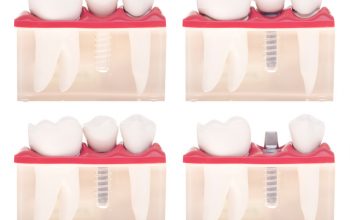
Temporomandibular joint and muscle disorders (commonly referred to as TMJ) are the conditions that lead to pain and dysfunction of the jaw joint. These conditions also affect the muscles that control jaw movement. According to studies, the most common TMJ pathology is a clicking sound. While doctors don’t know the exact cause of TMJ, they do know that when the joints experience pressure from talking and other mouth motions, pain is the result.
To better understand this condition, here is a primer detailing TMJ symptoms, how to diagnose and manage it.
Signs of TMJ
The defining characteristic of TMJ is severe pain that can last for years or disappear after a while. TMJ can affect you on one or both sides of the face with women being more predisposed than men at a 9:1 ratio. TMJ also tends to affect those between 20 and 40 years. Some of the symptoms associated with TMJ include:
- Feeling tired in the area around your face
- Swelling on one or both sides of your face.
- Hearing clicking, popping or grating sounds at the jaw joint location whenever you open or close your mouth. These sounds may or may not be accompanied by pain
- Experiencing your jaw locking in the closed (or open) mouth position
- Difficulty chewing due to an incorrect bite function which feels as if the lower and upper jaw aren’t fitting together as they should
- Feeling tender sensations or pain in your neck, face, jaw joint area, shoulders, and around the ear
- Ringing in the ear
- Headaches
- Toothaches
Diagnosing TMJ
Several other conditions can trigger signs and symptoms similar to TMJ. Such conditions include sinus problems, tooth decay, or gum disease. When you consult your TMJ dentist, they will begin by asking about your oral health history and then proceed to conduct an exam. Your TMJ dentist will also take some x-rays to ensure there aren’t any other problems mimicking TMJ symptoms.
If the TMJ dentist feels it is necessary, they will recommend you to an oral surgeon for further treatment and care.
Managing TMJ
For those suffering from the condition, managing TMJ pain is a high priority as it can be extremely discomforting. There are home remedies, non-medical ways to manage the pain as well as irreversible medical procedures.
1. Clear orthodontic appliances can help manage TMJ if it is caused by grinding or clenching your teeth. Ask your TMJ dentist for a recommended nighttime bite guard to help you reduce clenching or grinding.
2. Ice-packs can help you manage TMJ pain when it flares up. Apply the ice pack on the affected area for around 20 minutes. Another approach here is to alternate ice-packs with heated moist cloths every 15 minutes.
3. Strengthening exercises between bouts of TMJ pain help relieve pain when the next bout hits. Open your mouth as much as you can and place your index finger between your chin and lower lip. Push inward while closing your mouth against the resulting resistance.
Another strengthening exercise is to place a thumb under your chin and push the chin down. Keep opening your mouth against the gentle force from your thumb and then hold it open for ten seconds maximum.
4. Relaxation exercises help combat the stress that triggers tension resulting in TMJ pain. Sit or lie in a comfortable position and proceed to tense and release the tension from your body muscles. You can also try inhaling slowly with your stomach expanding rather than your chest. Exhale slowly and repeat the process between five to ten times.
5. A dental procedure to correct improper bite function can help stop the source of the pain. Consult your TMJ dentist to find out how you can go about the procedure.
Understand TMJ to Better Handle It
TMJ is a condition that can cause chronic or intermittent pain. If it goes unchecked, it can be very debilitating, impeding your comfort and essential life functions. Understand the signs and methods of managing TMJ to help you gain much-needed relief.



